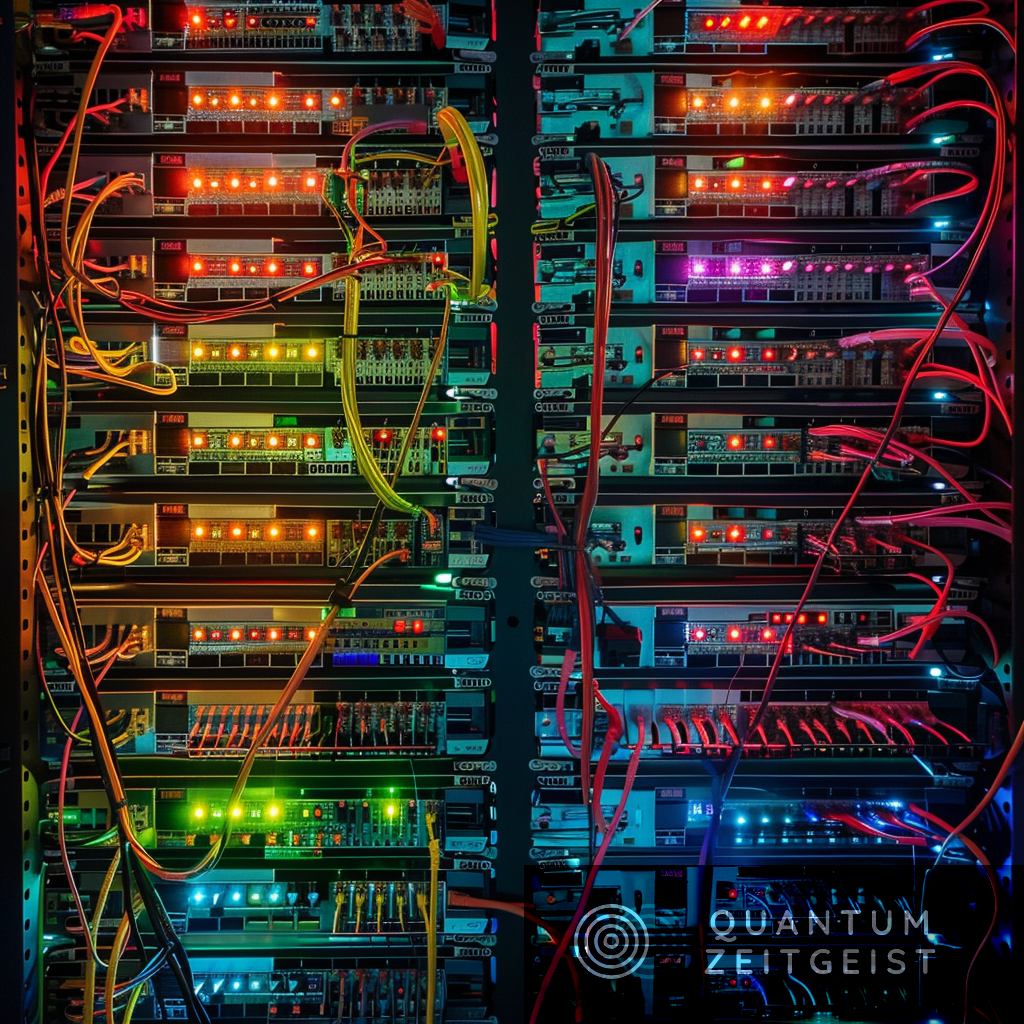Distributed Quantum Computing (DQC) uses multiple quantum processing units (QPUs) to simulate quantum circuits and solve quantum algorithms. The Distributed Quantum Computing Simulator (DQCS) is a tool that uses nonlocal quantum gates between nodes, creates distributed quantum circuits, and evaluates their performance in the presence of noise. The DQCS also studies the scaling of DQC for the quantum state preparation of a probability normal distribution. The future of DQC is promising as it provides a way to scale quantum computing by using several QPUs, increasing computational resources and making quantum computing more advantageous in the industry.
What is Distributed Quantum Computing?
Distributed Quantum Computing (DQC) is a method of quantum computing that utilizes multiple quantum processing units (QPUs) to simulate quantum circuits and solve quantum algorithms. The nodes of a distributed quantum computer consist of both local qubits, which are essential for local circuit operations, and communication qubits, which extend circuit capabilities across nodes. This method of computing is advantageous in the industry as it provides a way to scale by using several QPUs connected through communication links such as optical fibers or superconducting wires, thereby increasing the available computational resources.
In a DQC, the nodes consist of local processing units and communication units. The local processing units consist of local qubits and the communication unit consists of communication qubits that could be entangled between the nodes. This paper describes a distributed quantum computing simulator (DQCS) that uses nonlocal quantum gates between the nodes, creates distributed quantum circuits, and evaluates their performance in the presence of noise.
The DQCS is used to study distributed quantum algorithms and show the applicability of the dynamic quantum circuits in DQC that reduce the resource overhead and help achieve high fidelity. The DQCS is also used to study the probability distribution loading in DQC scaling with the number of nodes and to run the distributed quantum amplitude estimation (DQAE) algorithm on multiple nodes.
How Does the Distributed Quantum Computing Simulator Work?
The DQCS is a comprehensive package that consists of several modules. The first module, Nonlocal quantum gates, facilitates the application of nonlocal quantum gates between qubits residing in different nodes. It enables quantum gates to span across nodes, allowing for executing more complex distributed quantum algorithms.
The second module, Distributed circuits, enables users to effortlessly create distributed quantum circuits using a node dictionary and a quantum circuit. It automatically handles communication registers, preventing users from explicitly specifying them. For advanced users seeking more control, the third module, Create distributed circuits, offers flexibility where the user can provide input to the communication register, allowing us to simulate complicated quantum circuits.
The fourth module, Noise model, incorporates realistic noise modeling, including single-qubit and two-qubit errors, providing a more accurate representation of real-world quantum systems. The steps to run the simulator involve creating a quantum circuit using Qiskit, instantiating the distributed circuits with your quantum circuit and the nodes to obtain the distributed quantum circuit.
What is the Role of Noise in Distributed Quantum Computing?
The noise in quantum computation can be simulated using Qiskit’s noise model. The depolarization channel acts on the quantum state of n-qubits. The single qubit gate error channel could be obtained using the depolarization channel for n=1. Here, the quantum state before applying the single qubit quantum gate on the ith qubit is considered. The channel gives the transformation of the quantum state after the application of the single qubit quantum gate.
For a two-qubit quantum gate between the qubits i and j, the two-qubit gate error channel could be obtained for n=2, which applies the transformation of the quantum state after applying the two-qubit quantum gate. The noise model is instantiated with the distributed quantum circuit, specifying parameters such as the number of shots (repetitions) and error probabilities (single, two-qubit gate, measurement, reset errors).
How Does Distributed Quantum Computing Improve Quantum Algorithm Fidelity?
When the number of qubits in the same device increases, the noise from the crosstalk reduces the fidelity of the quantum algorithm. DQC provides an approach where multiple QPUs with fewer qubits could be used to run quantum algorithms. The DQCS offers a platform to study their performance.
The DQCS contains modules that provide users various ways to study, run, and evaluate the performance of quantum algorithms in a distributed quantum computer. The DQCS is used to study the scaling of DQC for the quantum state preparation of a probability normal distribution. It shows the applicability of the dynamic quantum circuits in DQC that reduce the resource overhead and help achieve high fidelity.
What is the Future of Distributed Quantum Computing?
The future of DQC is promising as it provides a way to scale quantum computing by using several QPUs. This increases the available computational resources and makes quantum computing more advantageous in the industry. The DQCS is a powerful tool that can simulate a quantum circuit on multiple nodes and study the performance of quantum algorithms in the presence of noise.
The DQCS can also study the scaling of DQC for the quantum state preparation of a probability normal distribution. This shows the potential of DQC in solving complex problems in quantum computing. As the field of quantum computing continues to grow, the use of DQC and tools like the DQCS will become increasingly important.
Publication details: “The simulation of distributed quantum algorithms”
Publication Date: 2024-02-16
Authors: Sreraman Muralidharan
Source: arXiv (Cornell University)
DOI: https://doi.org/10.48550/arxiv.2402.10745

